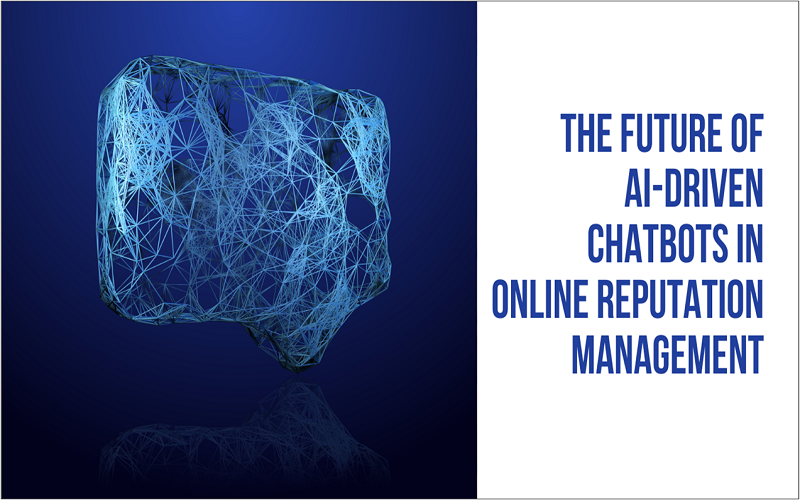What Influences Consumer Trust – The Reputation of your brand. If your online reputation is good, you are likely to gain new customers and repeat business that would allow the growth of the brand; a damaged online presence will push prospective consumers away from considering your enterprise even when they can generate revenue for your organisation. Chatbots, if used properly, can work as a charm in Online Reputation Management. These smart chatbots employ natural language processors to communicate with users on the web and deliver instant personalized responses.
Understanding AI-Driven Chatbots
Definition and basic functionalities of AI-driven chatbots
Text or voice input that can be accurately answered to connect with a customer. These are things like answering FAQs, customer support help, filling orders, and collecting user feedback. Over time, they also get better at adjusting and responding that way due to the manner in which they are coded as well. Further, these AI-based chatbots can intertwine with other systems and supported platforms to make a practical data-driven network, comprising various services. Being able to run 24/7 now means constant interaction and customer support.
How AI and machine learning enhance chatbot capabilities
When a trained chatbot interacts with a human in real-time, it feels very much like an interaction between two humans. A good ORM tool can enable chatbots to learn from previous encounters with customers, interpret their tone of voice, and use the brand’s knowledge base to offer accurate responses to them.
Moreover, AI-driven chatbots can solve complicated queries and work on more than one job at a time, offering context-aware feedback and giving personalized suggestions with a better user experience.
Natural Language Processing (NLP) is one of the most important technologies that facilitate chatbots with AI capabilities and help them interpret user language accurately.
Chatbots powered with Machine Learning (ML) are trained over time from the way they have interacted to exhibit better responses. Furthermore, other technologies like speech recognition and sentiment analysis improve a chatbot’s response, making it more contextually aware while increasing engagement with end-users.
The role of AI in shaping the future of ORM.
Real-time Monitoring + Response: AI can be on constant alert for brand mentions across social media, review sites, and more… instant alerts are sent straight to your company’s team of brand keepers. It makes it possible to respond quickly and promptly to positive as well as negative feedback so the brand can then groom its reputation proactively.
Advanced Sentiment Analysis AI: Powered sentiment analysis tools can predict the emotional tone of customer feedback accurately, helping brand agents prioritize issues for prompt resolution and damage control. This could help develop an empathetic response that works better with customers based on their feelings.
Customized Responses: AI can analyze customer data to tailor what you provide and how, making customers feel more cherished from their interactions with your brand. AI insights can be used by brand agents to customize interactions and improve customer satisfaction, thereby increasing loyalty.
Auto Customer Support: AI chatbots handle repetitive inquiries and complaints, this will lead to quicker resolution for customer queries.
Content Creation Management: AI-powered solutions can develop and manage content that speaks to your target audience, giving tremendous influence over what is written about you. Brand agents can use artificial intelligence to standardize messaging in their content strategies.
Big Picture Data Analysis: AI processes huge data sets in seconds and provides brand agents with detailed information on the customers they are dealing with. These insights allow building your ORM strategy and empower data-driven decision-making.
Voice and Chat Integration: Combined AI will blend voice recognition with chatbot technologies, resulting in near verdant omnichannel properties for customer interactions. Brand agents can offer consistent support from platform to platform, giving customers a greater brand experience.
Resource Optimization: AI-driven automation will simplify repetitive tasks, freeing up the time of brand agents to focus on higher-value activities.
Data-Driven Decision: AI will enable brands to deliver advanced data analytics that offer actionable insights. This information is valuable for brand agents as they can use it to structure their ORM strategies and improve the overall image of a brand.
These advancements in AI enable brand agents to provide quicker responses, customise every user interaction, and online reputation amidst the fiercely competitive digital world.
Why selecting the right ORM tool is important
Automating manual processes frees your time to take strategic actions instead. Functional tools deliver complete data analysis and actionable insights, which can drastically improve the quality of your reputation management campaigns as well as how soon they are executed.
ORM requirements change as an organization grows. By choosing scalable AI tools and platforms, the technology can manage significant data and interactions as it continues to scale without sacrificing performance, driving higher volumes which are now easier for managing a big customer base in a proper way.
AI tools should seamlessly integrate with existing systems like CRM, social media channels, and customer service tools for the interpretation of all customer interaction data.
With that said, each brand will have different needs and objectives; Proper AI tools also come with different customisation like customising responses based on different tonality. This adaptability guarantees that the tools can accommodate each brand’s individual voice and customer interactions.
So, it is absolutely essential to treat customer data responsibly and be compliant with all regulations. Choosing AI tools that place data security at the top of their priority list while abiding by compliance standards prevents organizations from breaching regulations, saving it from sensitive information and maintaining a good reputation with regulators.
Best Practices for Maximizing the Effectiveness of AI-Driven Chatbots
- Define key objectives based on what you want your conversational app to achieve, such as better customer service, higher engagement, or more feedback.
- The chatbot interface should be user-friendly and easy to navigate, allowing users to interact with the bot easily and locate necessary information.
- Train the chatbot with diverse and rich chunks of data to make it more efficient at understanding and responding correctly to various queries.
- Use advanced NLP techniques to improve the chatbot’s ability to understand and interpret user inputs in a more humanlike manner.
- By using customer data, individual replies and suggestions can be generated to make the user experience more personal without losing relevancy.
- Help users navigate and give them options to interact with the chatbot so they know what to do next, reducing confusion in using the bot.
- Monitor chatbot response time, user satisfaction, and resolution rate. Utilising this information will help you find out where you can improve.
- Keep updating the chatbot with your brands knowlegebase and continuously develop in terms of user queries (FAQs collected over time).
- Ensure the chatbot integrates smoothly and securely with other business systems, including CRM, ticketing systems, etc., to avoid data silos and provide a continuous customer experience.
- Provide a way for users to escalate their issue to be handled by a human agent when the chatbot cannot handle it, such as complex matters or sensitive issues.
Businesses must adhere to these best practices to make their AI-driven chatbots work better, which will bring in higher customer engagement and advocate online reputation management.
Final Thoughts
AI chatbots in online reputation management will go a long way in changing the future of businesses by proving to get them where they would like on their digital footprint. With the right use of these technologies in your ORM strategies, brands can be fast-paced, flexible, and well-equipped for future challenges.




